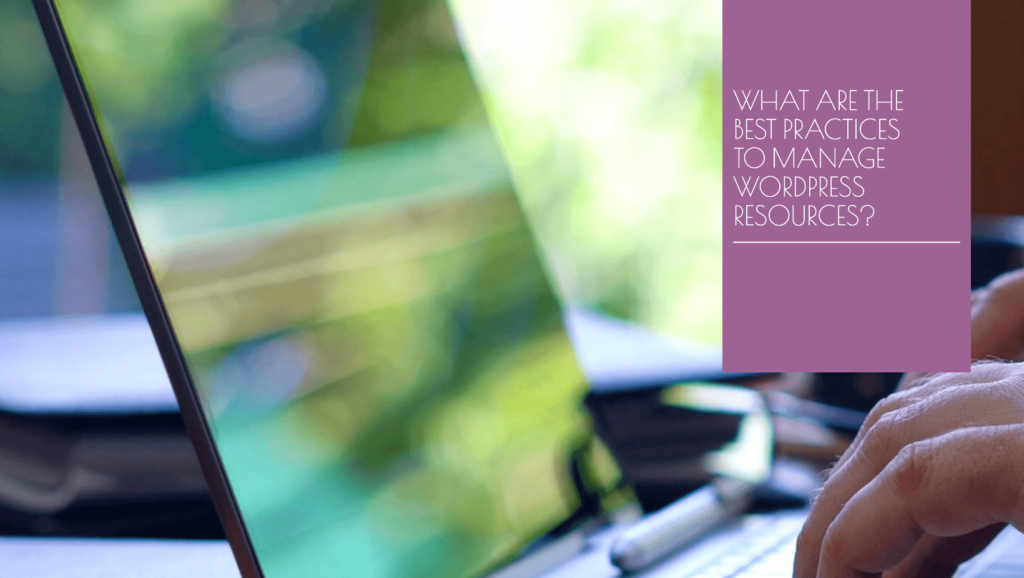Keeping WordPress resources under control is crucial to having a dependable, safe, and quick website. The performance and user experience of your website can be greatly improved by knowing the best practices for resource management, regardless of your level of experience as a developer or as a site owner.
Every little thing counts, from adopting lightweight themes and plugins to caching strategies and database optimization. This blog post explores the best practices for managing WordPress resources, which can help you optimize workflows, lower load times, and maintain the stability and responsiveness of your website. Learn how to maintain a flawless, interesting user experience for visitors on your WordPress website.
Top 8 Strategies to Manage WordPress Resources
A large percentage of the internet is powered by WordPress because of its scalability and versatility. However, managing resources and achieving peak performance for WordPress websites necessitates paying close attention to several different aspects. These best practices cover everything from server configurations to plugin management when it comes to efficiently managing WordPress hosting resources. Therefore, in this piece of writing, we’ll highlight the top 8 strategies to manage WordPress resources.
1. Choose a Reliable Hosting Provider
Resource management begins with choosing the right hosting plan. Although it’s less expensive, shared hosting might not work as well for websites with a lot of traffic. Virtual Private Server (VPS) hosting offers improved performance and dedicated resources.
Because managed WordPress hosting and dedicated hosting provide specialized resources and support, they may be the best options for large websites. Therefore, most website owners get WordPress hosting UAE service to allocate and manage valuable resources in their website that ensures fast and reliable website performance.
2. Optimize Server Configuration
Set up your server environment to comply with WordPress’s specifications:
- PHP Version: For better speed and security, use the most recent stable version that WordPress supports.
- Database Optimisation: To ensure effective query processing, regularly optimize your MySQL or MariaDB database.
- Caching Mechanisms: Varnish or Redis are two examples of server-side caching that can be used to lower server load and speed up response times.
3. Monitor Resource Usage
Keep an eye on how much CPU, RAM, and disc space your website is using regularly. You can find bottlenecks and places for improvement with the aid of tools like GTmetrix, New Relic, or the resource monitoring options offered by your hosting company. To be informed when resource usage surpasses predetermined thresholds, set up alerts.
Read also: Transforming Industries and Enhancing Lives
4. Implement Content Delivery Networks
By caching and distributing material from servers closer to your visitors, a CDN can dramatically reduce server load and enhance the speed at which your website loads. Well-known CDNs like Amazon CloudFront and Cloudflare can additionally offer extra security features like DDoS defense.
- Deliver static content by using CDN nodes that are closest to site users to provide files such as pictures, CSS, and JavaScript.
- Distribute load to CDN servers to relieve server pressure by assigning content delivery responsibilities to them.
5. Optimizing Website Performance
A website that is well-optimized loads more quickly and uses fewer resources. Make use of a lightweight theme and optimize your photographs by compressing them without sacrificing quality. Use lazy loading to postpone loading photos and videos until you need them. To minimize file size and enhance loading speeds, minify HTML, CSS, and JavaScript files. Delivery of content can be accelerated and load distributed by using a content delivery network (CDN).
6. Regular Updates and Maintenance
Maintaining the security and functionality of your website is ensured by updating WordPress, themes, and plugins. Frequent upgrades enhance performance and fix security flaws. Furthermore, make sure to routinely clean your database by eliminating unused plugins and themes, spam comments, and post revisions.
Read also: Conquer Short-Form Video with Yourvideo.agency
7. Database Optimization
Server load is decreased and website performance is enhanced with an optimized database. Regularly purge superfluous data from your database by hand or with plugins like WP-Optimize. To expedite database processes, employ query optimization and indexing strategies. If you have a hosting plan that allows it, think about utilizing a separate database server.
8. Security Measures
Incorporate strong security measures to ward against resource-draining attacks on your website. To keep an eye out for and stop malicious activity, use security plugins like. Make sure your website is using HTTPS, and run virus checks on it frequently. Make sure that every user account has a secure password and two-factor authentication enabled.
- Firewall Configuration: To guard against DDoS assaults and filter malicious traffic, set up firewalls.
- Plan Regular Backups: To avoid data loss and to speed up recovery in the event of a security incident, schedule regular backups.
- Secure File Permissions: Limit access to critical files and folders by imposing restrictions on file permissions.
To protect your WordPress website and server resources, you have to incorporate the latest security configurations that increase security. For this, you can invest in WordPress hosting UAE solutions to ensure the best security, website maintenance, and backup solutions that optimize speed and gather massive users on your site.
Get Ready to Invest in WordPress Hosting
A combination of proactive optimization, ongoing monitoring, and strategic planning is required to manage WordPress hosting resources effectively. You can guarantee scalability, improve performance, and give users a flawless experience by adhering to these best practices. To preserve the integrity of your website and gradually improve resource use, be watchful about upgrades and security precautions.



